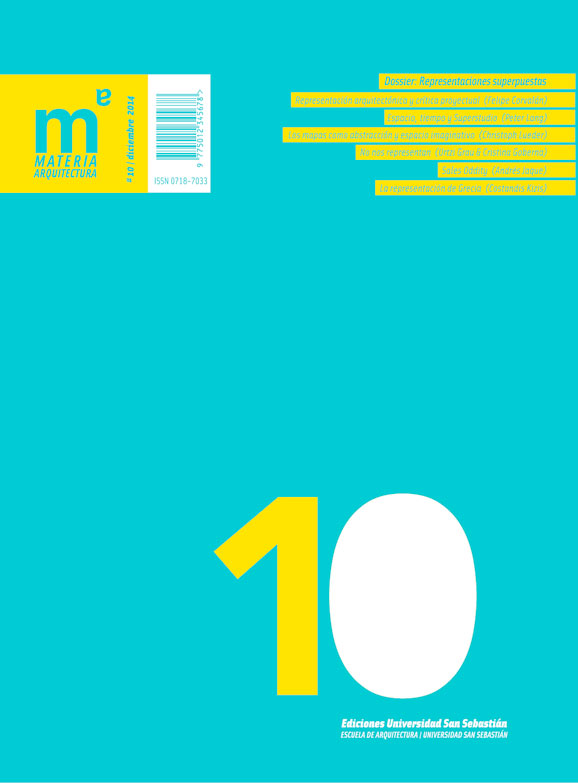Architectural representation and project critique. New fields of meaning
Article Sidebar
Keywords:
Main Article Content
Abstract
validity of the representation strategies is based on its capacity to link the discursive field (theory) with the operating field (project).
Based on this condition, it is possible to propose that the emergence of the representation in architecture is linked to the project
concept that defines architecture in the context of modernity. However, in the second half of the twentieth century, new variables
are incorporated to the traditional concept of project. Considering this evolution, it is possible to identify the critical potential of
architectural representation that allows the opening of the concept of the project, extending the disciplinary boundaries of architecture.
Article Details
Materia Arquitectura provides immediate and free access to all the content of this online edition, published simultaneously with the print edition.
Materia Arquitectura does not charge authors for any concept.
All contents of this electronic edition are distributed under the Creative Commons license of "Attribución-shareAlike 4.0 Internacional" (CC-BY-SA).
The rights of the published texts and images belong to their authors, who grant Materia Arquitectura the license for their use. The management of the permits and the authorization of the publication of the images (or of any material) that contains copyright and its consequent rights of reproduction in this publication is the sole responsibility of the authors of the articles.
As long as they mention their origin, the authors are free to distribute their articles by other means. Any total or partial reproduction of the material must mention its origin.
Downloads
References
ALBERTI, L. B. (1991). De Re Aedificatoria. (J. Fresnillo Núñez, Trad.) Madrid: Akal.
ALLEN, S. (mayo-junio, 1997). From objects to field. Architectural Design, 67(5/6), 24-31.
ALLEN, S. (2000). Practice: architecture, technique and representation. Australia: G+B Arts.
BENJAMIN, W. (2009). Estética y política. (T. J. Bartoletti, & J. Fava, Trads.) Buenos Aires: Las Cuarenta.
CASSIRER, E. (1968). Antropología filosófica: introducción a una filosofía de la cultura. (E. Imaz, Trad.) México: Fondo de Cultura Económica.
CHARTIER, R. (2002). El mundo como representación. Historia cultural: entre práctica y representación. (C. Ferrari, Trad.) Barcelona: Gedisa.
CURTIS, W. J. (1998). Lo único y lo universal: Una perspectiva de historiador sobra la arquitectura reciente. Revista El Croquis, 88/89.
HABERMAS, J. (1989). El discurso filosófico de la modernidad (doce lecciones). Buenos Aires: Taurus.
HEIDEGGER, M. (1998). La época de la imagen del mundo. En M. Heidegger, Caminos de bosque (H. Cortés, & A. Leyte, Trads.). Madrid: Alianza.
JAMESON, F. (1998). Teoría de la Posmodernidad. (C. Montolío Nicholson, & R. del Castillo, Trads.) Madrid: Trotta.
KAIJIMA, M., KURODA, J., & TSUKAMOTO, Y. (2010). Made in Tokyo. En E. Walker (Ed.), Lo ordinario. Barcelona: Gustavo Gili.
TSCHUMI, B. (1999). Temas extraídos de los Manhattan Transcripts. En P. Hereu, J. M. Montaner, & J. Oliveras, Textos de arquitectura de la modernidad. Madrid: Nerea.
VESELY, D. (2004). Architecture in the age of divided representation. The question of creativity in the shadow of production. Cambridge, MA: The MIT Press.
Most read articles by the same author(s)
- Felipe Corvalán, Representación arquitectónica y crítica proyectual. Nuevos campos de significación , Materia Arquitectura: No. 10 (2014): Materia Arquitectura 10 (Diciembre/December 2014)
